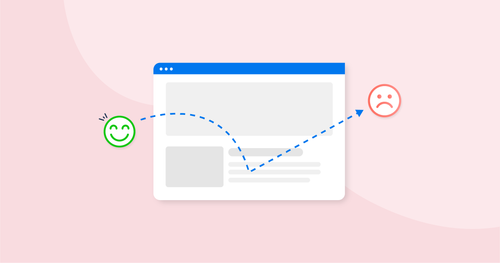Dealing with user email bounce can be frustrating, especially when important communications fail to reach their intended recipients. In this comprehensive guide, we will explore the causes behind user email bounce and provide you with effective solutions to resolve this issue.
Understanding User Email Bounce
Email bounce occurs when an email fails to reach its intended recipient and is returned to the sender. User email bounce specifically refers to the bounce that happens due to issues on the recipient's end, such as a full mailbox, email server problems, or spam filters.
Causes of User Email Bounce

Let's explore some of the common causes of user email bounce:
1. Full Mailbox
One of the primary reasons for user email bounce is a full mailbox. When the recipient's mailbox reaches its storage limit, new emails cannot be delivered, resulting in bounce notifications sent back to the sender. The recipient should free up space by deleting unnecessary emails or upgrading their mailbox storage.
2. Email Server Issues
If the recipient's email server is experiencing technical problems or downtime, incoming emails may bounce. In such cases, it is recommended to wait for the server to be restored or contact the recipient to notify them of the issue.
3. Spam Filters and Email Security
Spam filters and email security measures play a vital role in protecting users from unsolicited emails and potential threats. However, these filters can sometimes be too strict and incorrectly flag legitimate emails as spam, causing them to bounce. It is important for senders to adhere to email best practices and avoid using spam trigger words or suspicious attachments.
4. Incorrect Email Address
An incorrect or misspelled email address can lead to email bounce. Double-check the recipient's email address for any errors before sending the email to avoid unnecessary bounce issues.
Resolving User Email Bounce
To resolve user email bounce issues, consider the following solutions:
1. Verify Recipient's Mailbox Status
If you receive a bounce notification indicating a full mailbox, reach out to the recipient and inform them about the issue. Encourage them to free up space or upgrade their mailbox storage to ensure successful email delivery.
2. Contact the Recipient
If you suspect the recipient's email server is experiencing problems, it may be helpful to contact them directly. Inform them about the email bounce issue and ask if there are any ongoing server or network-related problems causing the bounce.
3. Review Email Content and Structure
Examine the content and structure of your emails to ensure they comply with best practices and avoid triggering spam filters. Avoid using excessive capitalization, misleading subject lines, or suspicious attachments that could increase the chances of bounce issues.</
4. Maintain Good Sender Reputation
Avoid engaging in spammy practices that could harm your sender reputation. This includes refraining from sending unsolicited emails, regularly monitoring and addressing any complaints or bounce rates, and implementing sender authentication protocols like SPF, DKIM, and DMARC.
5. Use an Email Delivery Service
If you consistently encounter user email bounce issues, consider using a reputable email delivery service. These services have dedicated infrastructure and tools to ensure high email deliverability rates, reducing the likelihood of encountering bounce problems.
Frequently Asked Questions
Q1: Can the recipient's spam filters be too sensitive?
A1: Yes, spam filters can sometimes be overly sensitive and mistakenly classify legitimate emails as spam. To avoid this issue, make sure to follow email best practices, use clear and concise subject lines, avoid spam trigger words, and establish a good sender reputation.
Q2: How can I check if my email was flagged as spam?
A2: If you suspect your email was flagged as spam, you can use email deliverability tools that provide insights into your email's reputation and deliverability. These tools can help identify potential issues and suggest improvements to avoid bounce problems.
Q3: What should I do if the recipient's mailbox is consistently full?
A3: If you frequently encounter a full mailbox bounce error, consider reaching out to the recipient and suggesting alternative communication channels. Additionally, encourage the recipient to regularly clean up their mailbox or upgrade their storage capacity.
Q4: Are there any best practices to avoid email bounce?
A4: Yes, adopting email best practices can help minimize email bounce issues. This includes maintaining a clean and well-managed email list, regularly monitoring bounce rates, complying with anti-spam regulations, and ensuring proper email structure and formatting.
Conclusion
User email bounce issues can hinder effective communication and disrupt important interactions. By understanding the common causes of user email bounce and implementing the recommended solutions outlined in this comprehensive guide, you can significantly reduce the likelihood of encountering bounce problems. Remember to verify recipient mailbox status, communicate with recipients to address server issues, adhere to email best practices, maintain a good sender reputation, and consider using reliable email delivery services. By following these strategies, you can enhance email deliverability and ensure that your messages reach their intended recipients successfully.



